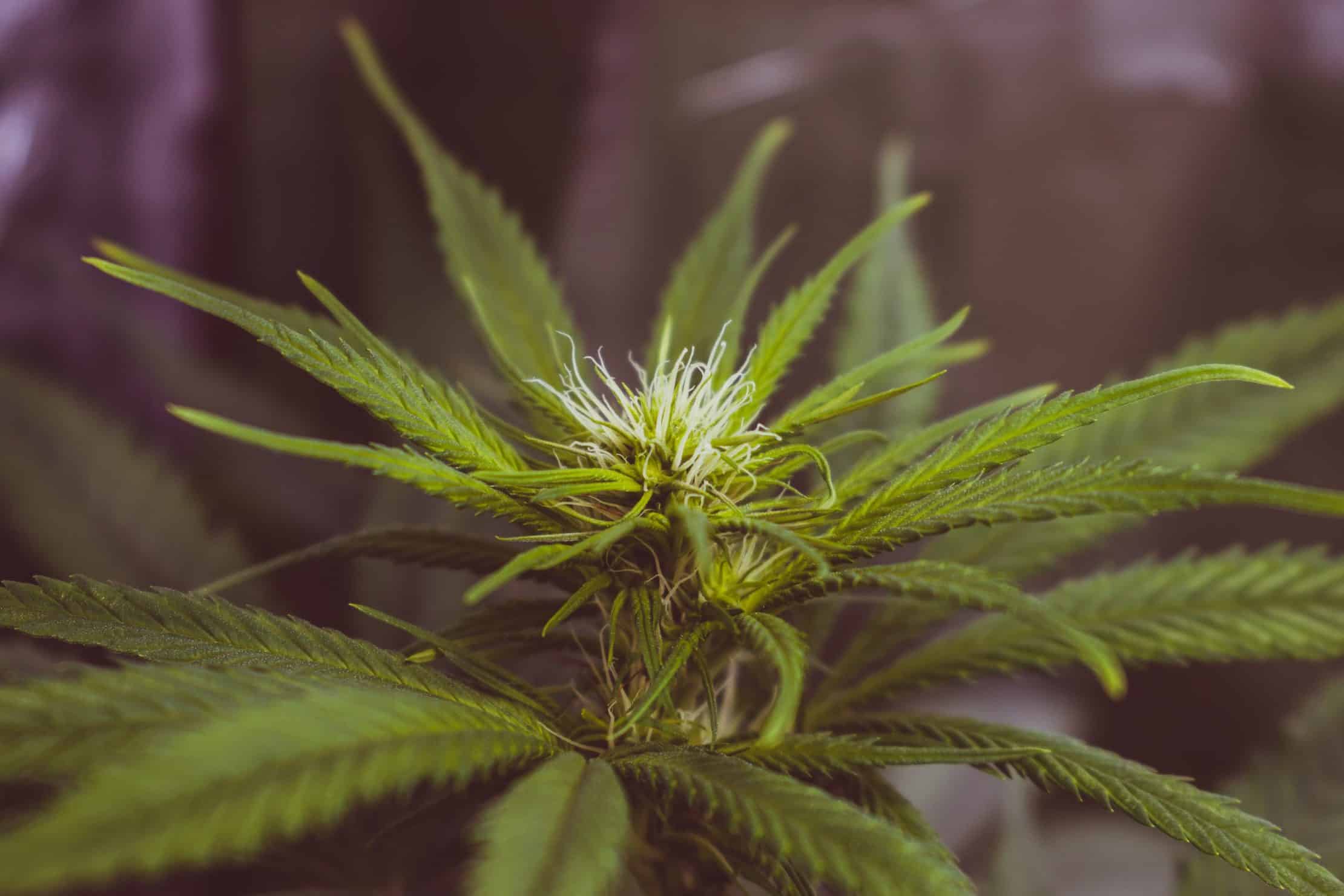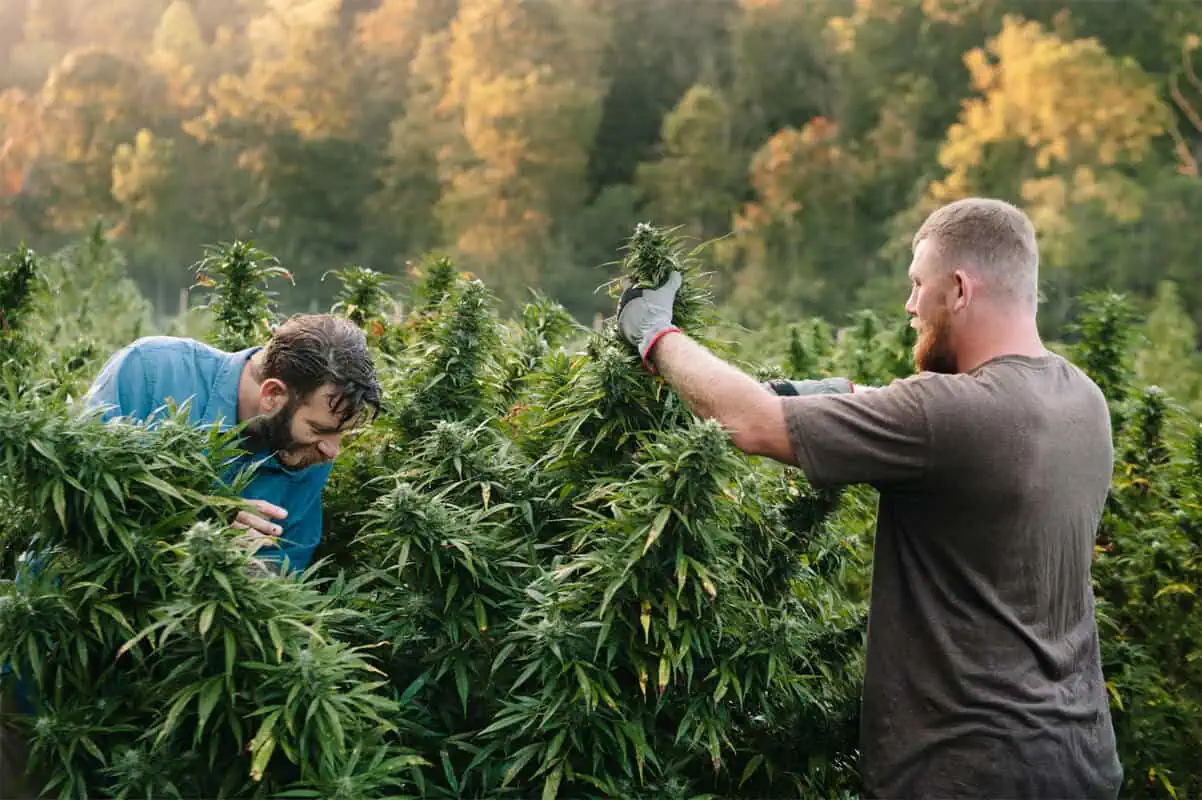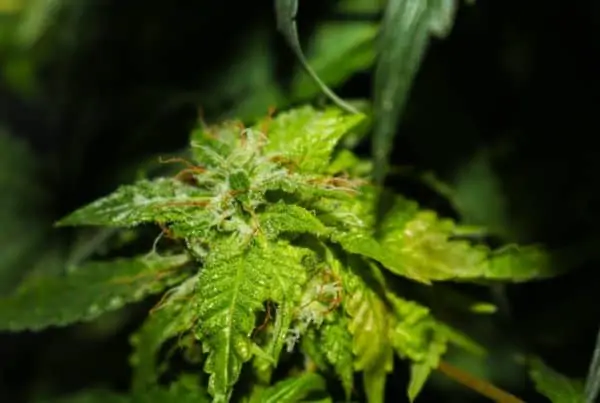TABLE OF CONTENTS
Fungus gnats are black in color, with long legs and gray and transparent wings, and between 3 to 5 millimeters in length. You may notice a Y-shaped vein near each wing’s tip. Fungus gnats are weak fliers, so they tend to walk around the soil and fly in short spurts.
They hatch larvae that have black heads and a clear body. Fungus gnats on marijuana are found down at the bottom portions of the cannabis plant, and even in the soil.
Adult females can lay up to 200 eggs in a single area or in various crevices of the soil. The larvae that the females lay burrow down below the soil level about 1 to 3 inches. The adult fungus gnat does not eat at all, and instead lives only to breed.
The little baby gnats feed on the soil and roots and can over time cause a weakening of the strength of the plant. They are very damaging to cannabis plants because they affect the drainage properties of the soil.
Fungus gnat hatchlings can often be seen drifting in the run-off from the water that is fed to cannabis plants and gathers in the tray underneath the pot. Larvae hatch in 5 to 10 days and take about a month before they are considered adult fungus gnats.
Outdoor fungus gnats can be found in the soil. If moving outdoor plants to an indoor grow it is recommended to check for fungus gnats before introducing the plant to its new environment.
Fungus Gnat Life Cycle
Fungus gnats begin their life as an egg. Female gnats prefer to lay their eggs in a damp medium at about 75º Fahrenheit. These bugs can grow from egg to adult in 27 days at 68º Fahrenheit, 21 days at 86º, and 62 days at 59º. Fungus gnats don’t do well in extremely high temperatures.
An egg can hatch in about three days. In about 10 days, the fungus gnat larvae transforms into a pupa. The pupa takes another four days to turn into an adult. These critters can live for about 18 to 30 days.
Keep in mind, fungus gnats prefer warm and humid environments. A fungus gnat generation can develop every 17 days. Without prevention or corrective measures, fungus gnat larvae can wreak havoc on your crop and yield. Fungus gnat larvae feed on decaying plant matter, but plant roots are also on the menu. Adult gnats don’t really eat the roots, but can be a nuisance for growers.
Signs of Fungus Gnat on Marijuana Damage
A small collection of fungus gnat can be quickly taken care of, but an infestation can begin to damage your plant. Fungus gnat larvae infestations can destroy roots and stunt plant growth. A large population of gnats can slow down root growth. A small root system is unable to feed the entire plant and stimulate growth.
Young plants, seedlings, and unrooted cuttings are more vulnerable to the insects’ root chewing. Larval feeding of the roots can stunt an unrooted cutting’s, also known as a clone, callus formation. A callus formation is a natural wounding response that precedes root formation during propagation.
Most of the plant damage occurs in the root structure, but fungus gnats can also destroy crops by spreading diseases. Adults and larvae can spread Thielaviopsis, Fusarium, and Verticillium. Larvae are thought to spread the diseases through their excretion. Adult gnats may pass diseases through their excretion or by carrying spores on its body.
Shore Fly or Fungus Gnat?
Shore flies are often confused for fungus gnats due to their similar look and because they are found in the same damp environments. Only fungus gnats, however, can damage plants and roots. Shore flies are more robust than gnats and have short antennae and tiny white spots on their dark gray wings.
Unlike fungus gnats translucent larvae, shore flies produce opaque larvae with no distinct head. Shore flies are stronger fliers than the weak gnat. For this reason, you’ll see shore flies buzzing about more than the ground-feeding fungus gnat. If you have shore flies, you can put out blue sticky traps to attract them.
How To Prevent and Control Fungus Gnats on Marijuana:
- Keep the screens on the windows down all the time.
- Make sure the soil is as dry as it can be tolerated, meaning do not water unless it is really needed.
- Keep compost away from your garden
- Maintain proper drainage in the container
- Avoid an accumulation of decaying plant matter
- If using organic feeds, closely monitor plants for fungus gnats. Fungus gnat populations can be three times as big in organic substrates than traditional ones. In an organic substrate, fungus gnats may be able to lay more eggs or have more eggs develop into adults.
- Put a piece of cloth over the soil so the gnats have nowhere to lay their eggs.
- Place a potato down (in slices about an inch thick or wedges)in the soil of the garden to check for larvae. Place the slices cut-side down into the soil. If you see a bunch of little maggots on the potato after a half a day it is telling you that you have gnats larvae in there.
If you have fungus gnats on marijuana in your garden, the following are commonly used items to get rid of them:
- Insecticidal Soap
- Bacteria in the form of Gnatrol can be applied with water by soil drench. The bacteria in Gnatrol, Bacillus thuringiensis var. israelensis, work when ingested by the larvae. The bacterial toxin destroys the larvae. Keep in mind, the toxin is only effective within 48 hours of application.
- Neem Oil (We really love the brand “Dyna-Gro Pure Neem Oil”. It has shown to be very effective for getting rid of gnats and other insects in an organic method.)
- Predatory Mites such as Stratiolaelaps scimitus (hypoaspis miles) should be released directly after planting. A single application can provide up to eight weeks of gnat control.
- Steinernema Feltiae Nematodes should be used at the beginning of the crop or immediately after and every two weeks after that. Nematodes aren’t especially useful for large infestations. Keep your substrate moist to ensure the nematodes are able to disperse when applied to the soil. Nematodes can last up to six weeks after a single drench application.
- Rove beetles usually feed at night. They eat almost any insect or mite in the top layer of soil. Adult rove beetles can fly from plant to plant providing pest management of gnats, shore flies, and larvae. Apply one to two beetles per square foot of your growing media.
- Synacra paupera, a parasitic wasp, inserts its eggs into fungus gnat larvae so when they hatch, they can feed on the gnat larvae.
- Hunter flies, also known as Coenosia attenuata, look like a house fly and feed on flying adult fungus gnats and shore flies. They can kill over 100 of them in their lifespan. Hunter fly larvae in the soil feed on more than 200 fungus gnat larvae in its larval stage.
- Pyrethrum
- Perlite (add on top of the media)
- Use yellow sticky cards in the garden. Aphids are drawn to the color yellow and will fly into them and get stuck. Hang the sticky cards vertically slightly above the plant’s canopy and near soil level. Keep track of the trapped gnat count weekly to assess whether the infestation is growing or shrinking.
- If you have larvae in your soil, let the top few layers of the soil dry out. Once the soil is dry, add a mixture of one part 3% hydrogen peroxide with 4 parts water and add the mix to your top layer of the soil. It will kill the larvae and not damage your plants. You can do this on a regular basis to assure the gnats never return. It is actually good for the soil to do.
For high populations of fungus gnats, it’s recommended to use various of these pest control methods. For instance, you can pair your rove beetles with another predator to handle the workload.
“
There are over 300,000 jobs in the cannabis industry. CTU trained me for one of them!

Makes $24.50 @ THC +
Want to get trained online at the world’s leading cannabis training college?
To learn how to deal with all types of pests when growing cannabis, and to get tips from award-winning cannabis growers, sign up at the premier cannabis university online.

Luis Cordova
Luis Cordova is a distinguished author, and renowned expert in cannabis cultivation, who possesses a Master's degree in Plant Biotechnology and Pharmaceutical Science. As a valued contributor to highly esteemed publications such as Cannabis Training University and Maximum Yield Magazine, Luis has emerged as a trusted source of guidance and knowledge in the cannabis industry. Having written thousands of informative articles, Luis is widely recognized for his comprehensive expertise on cultivating cannabis, both indoors and outdoors.












 Jeff was involved in an accident where he endured a traumatic brain injury. He had a week-long stay in ICU where brain surgeons
Jeff was involved in an accident where he endured a traumatic brain injury. He had a week-long stay in ICU where brain surgeons  100% risk free money back guarantee within 48 hours after purchase if student has not completed any of the courses or exams.
100% risk free money back guarantee within 48 hours after purchase if student has not completed any of the courses or exams.